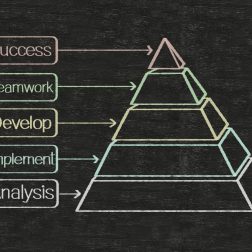
Helping people adopt a mindset for positive behavioral change can be a challenge. The truth of the matter is, both positive and negative behaviors affect an individual’s productivity, communication, team functions, and interactions with clients.
Performance-based behavioral assessments like the Winslow Assessment identify the strengths and weaknesses of a person where they are right now, not where they’ve been or what they’ve done in the past. We all know, life is constantly changing and those good or bad circumstances affect our behaviors more than we probably like to admit, both positively and negatively.
Unfortunately, there are many “personality” profiles that broadly label people and assign them to Groups. While it might be interesting to know that John is a German Shepherd and Karen is an Golden Lab, these labels are not conducive to their own, or the organization’s, forward momentum or success.
Instead of labeling someone and thus making allowances, let’s help them focus on their behaviors –
- Interpersonal; how they function with people.
- Organizational; how they function with tasks.
- Dedication; how they function with commitments.
- Self-Control; how they function with emotions.
When you help people (your employees) identify and recognize their behavioral tendencies and how/where they show up (and the influence they have on their work, and on others), new conscious behavioral patterns will emerge.
It is true – awareness is the beginning of wisdom, especially when it comes to behavioral change.
The following are the 4 stages of behavior change:
- Unconscious – Incompetent: “I am unaware that I don’t do this well.” Otherwise known as the “blind spot.”
- Conscious – Incompetent: “I know that I don’t do this well.”
This is where self-awareness of the need to change ignites. - Conscious – Competent: “I do this well only when I think about it.”
This stage signals a transition from awareness to action by modeling others who do this well. - Unconscious – Competent: “I do this well all the time.”
Competency entails a permanent behavior change — or high performance by reflex.
Here’s what you can do:
- Identify your employees’ current behaviors using the Winslow Assessment.
- Employees should read through their Winslow Participant’s Report two to three times.
- Use the Windridge/Winslow Worksheet to identify three of their already successful behavioral areas; these are assets to be capitalized on.
- Use the Windridge/Winslow Worksheet to identify three behaviors that are holding them back. These are their liabilities, the behaviors they will need to modify/change to achieve success both personally and professionally.
- Identify and clarify three actionable steps for capitalizing on assets – areas of strength.
- Identify and clarify three actionable steps for modifying liabilities – areas needing improvement.
- Revisit these objectives and goals at three to six month intervals.
Through the entire assessment process, there is never a reason for anyone to feel inferior. No one is alone in this — we all have strengths and areas we need to improve upon so we can become more effective in the work that we do, and thus gain greater success.



